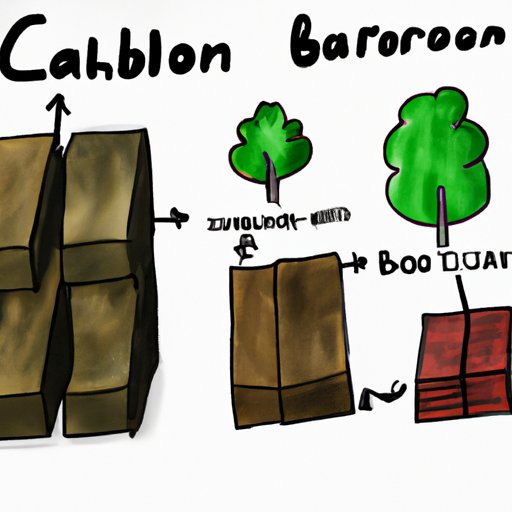Introduction
Carbon is one of the essential elements of life and forms the basic building blocks for all living things. From the carbohydrates that provide energy to lipids, proteins, and nucleic acids that form our cells and DNA, carbon is integral to life’s processes. This article will explore why carbon is important to life and how it impacts our environment.
Carbon’s Role in the Basic Building Blocks of Life
Carbon is essential to carbohydrates, lipids, proteins, and nucleic acids, which are the basic building blocks of life. Carbohydrates, such as glucose and fructose, provide energy to living cells. Lipids, including fats and oils, make up cell membranes and provide an energy source for the body. Proteins are essential for growth and repair and play a critical role in cell signaling. Finally, nucleic acids, including DNA and RNA, form the genetic material that determines an organism’s traits and characteristics.
The Carbon Cycle
The carbon cycle is the process by which carbon moves through the environment. It involves a series of natural processes, including photosynthesis, respiration, and decomposition. Carbon is taken up by plants during photosynthesis and is released back into the atmosphere through respiration. When plants and animals die, the carbon in their bodies is broken down through decomposition, which releases carbon back into the environment.
Human activities, such as deforestation and the burning of fossil fuels, have a significant impact on the carbon cycle. Deforestation reduces the number of trees that can absorb carbon dioxide from the atmosphere, while fossil fuel burning releases carbon dioxide and other greenhouse gases into the atmosphere, contributing to climate change.
Fossil Fuels and Climate Change
Fossil fuels are carbon-based, and their burning releases significant amounts of carbon dioxide and other greenhouse gases into the atmosphere. These gases trap heat and increase the Earth’s temperature, contributing to climate change. Climate change has severe consequences for the planet, including the melting of ice caps, rising sea levels, and more frequent natural disasters.
Carbon Dating
Carbon dating is a technique used to determine the age of ancient materials, such as archaeological artifacts and fossils. It works by measuring the amount of carbon-14, a radioactive isotope of carbon, remaining in a sample. The amount of carbon-14 decreases over time, meaning that scientists can use the measurements to determine how long ago the material was last alive. However, carbon dating has its limitations and may not be accurate for materials older than 50,000 years.
Carbon Capture and Storage
Carbon capture and storage (CCS) are technologies designed to capture carbon dioxide emissions from power plants and other industrial processes and store them underground or in other long-term storage facilities. CCS has the potential to significantly reduce carbon emissions, but it is still in the early stages of development and faces logistical, financial, and technological challenges.
Conclusion
Carbon is essential to life, serving as the basic building blocks for carbohydrates, lipids, proteins, and nucleic acids. Its role in the carbon cycle is critical to maintaining a healthy planet, but human activities have disrupted it in significant ways, contributing to climate change. It is essential that we take action to reduce carbon emissions and protect our planet from further damage.
